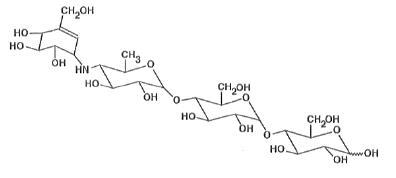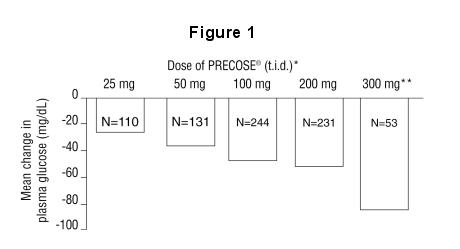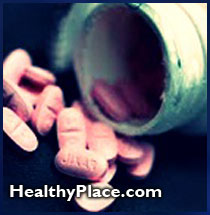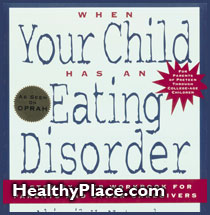Mood Disorders and the Reproductive Cycle
Women have a significantly higher risk for developing mood disorders than men. Although reasons for this gender difference are not fully understood, it is clear that changing levels of reproductive hormones throughout women's life cycles can have direct or indirect effects on mood. Fluctuations in reproductive hormones may interactively affect neuroendocrine, neurotransmitter, and circadian systems. Reproductive hormones also may affect response to some antidepressant drugs and alter the course of rapid-cycling mood disorders. Nonpharmacologic interventions, such as light therapy and sleep deprivation, may be beneficial for mood disorders linked to the reproductive cycle. These interventions may have fewer side effects and a greater potential for patient compliance than some antidepressant drugs. (The Journal of Gender-Specific Medicine 2000;3[5]:53-58)
Women have a greater lifetime risk for depression than men, with a ratio of approximately 2:1 for unipolar depression or recurrent episodes of depression.1,2 Men may be as likely as women to develop depression, but they are more likely to forget that they had a depressive episode.3 Although the prevalence of bipolar disorder in men and women is more equally distributed, the course of that illness may differ between the sexes. Men may be more prone to develop periods of mania, whereas women may be more likely to experience periods of depression.4
What are the contributing factors to the predominance of mood disturbance in women? Recent data suggest that the onset of puberty, rather than chronological age, is linked to the increase in rates of depression in women.5 Thus, changes in the reproductive hormonal milieu may precipitate or alleviate depression in women. This seems particularly likely in the case of rapid-cycling affective illness.
Cyclical Mood Disorders in Which Women Predominate
Rapid-cycling affective illness is a severe form of bipolar disorder in which individuals experience four or more cycles of mania and depression within a year.6 Approximately 92% of patients with rapid-cycling bipolar disorder are women.7 Thyroid impairment8 and treatment with a tricyclic or other antidepressant drug are risk factors for developing this form of manic-depressive illness. Women have 10 times the incidence of thyroid disease as men, and more than 90% of patients who develop lithium-induced hypothyroidism are women.9-11 Women are also more likely than men to develop rapid cycles induced by tricyclics or other antidepressants.12,13
Seasonal affective disorder (SAD), or recurrent winter depression, also predominates in females. Up to 80% of individuals diagnosed with SAD are women.14 The depressive symptoms in this disorder are inversely linked to the day length or photoperiod. The disorder can be treated successfully with bright light.15
 Given that these risk factors are correlated with sex, it is likely that reproductive hormones play an important role in the pathogenesis of rapid mood cycles. Studies of estrogen treatment for mood disorders have shown that too much or too little estrogen can alter the course of mood cycles. For example, Oppenheim16 found that estrogen induced rapid mood cycles in a postmenopausal woman with depression refractory to treatment. When the estrogen was discontinued, the rapid mood cycles ceased. The postpartum period (including the time after an abortion), when there is a rapid decline of reproductive hormone levels and possibly an increased risk for developing hypothyroidism,17 can also be associated with the induction of rapid cycles of mood.
Given that these risk factors are correlated with sex, it is likely that reproductive hormones play an important role in the pathogenesis of rapid mood cycles. Studies of estrogen treatment for mood disorders have shown that too much or too little estrogen can alter the course of mood cycles. For example, Oppenheim16 found that estrogen induced rapid mood cycles in a postmenopausal woman with depression refractory to treatment. When the estrogen was discontinued, the rapid mood cycles ceased. The postpartum period (including the time after an abortion), when there is a rapid decline of reproductive hormone levels and possibly an increased risk for developing hypothyroidism,17 can also be associated with the induction of rapid cycles of mood.
Connection With Thyroid Impairment
There may be a tighter connection between the reproductive system and the thyroid axis in women than in men. In hypogonadal women, the thyroid-stimulating hormone (TSH) response to thyrotropin-releasing hormone (TRH) is blunted.18 When a reproductive hormone such as human chorionic gonadotropin (hCG) is administered, women's response to TRH is enhanced, becoming comparable to that of control subjects. When the hCG is removed, the TSH response to TRH again becomes blunted. In contrast, hypogonadal men do not have a blunted TSH response to TRH, and adding reproductive hormones does not significantly enhance the effect. In healthy women, the TSH response to TRH also can be enhanced with the addition of oral contraceptives.19
Women may be vulnerable to thyroid impairment, predisposing them to rapid mood cycles; however, they are also more responsive to thyroid treatment. Stancer and Persad20 found that higher doses of thyroid hormone can improve rapid cycling in some women but not in men.
Parry and Rush21 found that oral contraceptives - particularly pills with a high progestin content - may induce depression. In fact, atypical depressive features are one of the most common reasons women stop taking birth control pills; up to 50% of women who discontinue oral contraceptives do so because of these side effects. The mediation of the depressive effect of estrogen is thought to be through tryptophan metabolism. Tryptophan is converted to kynurenine in the liver and to serotonin in the brain. Oral contraceptives enhance the kynurenine pathway in the liver and deter the serotonin pathway in the brain. A lower level of serotonin available in the brain is associated with depressive mood, suicidal symptoms, and impulsive behaviors. Oral contraceptives given with pyridoxine, or vitamin B6 (a competitive inhibitor of estrogen), can help mitigate some of the milder depressive symptoms.21,22
Premenstrual Dysphoric Disorder
What historically has been referred to as premenstrual syndrome is now defined as premenstrual dysphoric disorder (PMDD) in the Diagnostic and Statistical Manual of Mental Disorders, fourth edition (DSM-IV).23 This illness occurs during the premenstrual, or late luteal, phase of the menstrual cycle; symptoms remit during the beginning of the follicular phase. In psychiatry, PMDD is one of the few disorders in which both the precipitating and the remitting influences are linked to one physiologic process.
Premenstrual dysphoric disorder is classified as a mood disorder, "Depressive Disorder, Not Otherwise Specified," in the DSM-IV. Because of political controversy surrounding the inclusion of this disorder in the DSM-IV text, its criteria are listed in Appendix B, as an area needing further research.23 Three factors are involved in making the diagnosis of PMDD. First, the symptoms must be primarily related to mood. Currently, PMDD symptoms are listed in the DSM-IV in order of their frequency of occurrence. After pooling the ratings from several centers across the United States, the most frequently reported symptom was depression.24 Second, symptom severity has to be problematic enough in the woman's personal, social, work, or school history to interfere with functioning; this criterion is also used for other psychiatric disorders. Third, the symptoms need to be documented in relationship to the timing of the menstrual cycle; they must occur premenstrually and remit shortly after the onset of menses. This cyclic pattern needs to be documented by daily mood ratings.
DeJong and colleagues25 examined women who reported premenstrual symptoms. Of those women who completed daily mood ratings, 88% were diagnosed with a psychiatric disorder; the majority had a major depressive disorder. This study reflects the necessity for careful prospective screening as to the timing and severity of symptoms for women presenting with premenstrual complaints.
Role of the Serotonin System
The role of the serotonin system in discriminating PMDD patients from normal control subjects is well-supported in the literature,26 and it explains the efficacy of the selective serotonin reuptake inhibitors (SSRIs) in treating this disorder.27,28 Whether by platelet serotonin uptake or imipramine binding studies, PMDD versus healthy comparison subjects have lower serotonergic function.26 In a multicenter Canadian trial, Steiner and colleagues28 examined the clinical efficacy of fluoxetine at 20 mg per day versus 60 mg per day throughout the menstrual cycle in women with PMDD. The 20-mg dosage was as effective as the 60-mg dosage, with fewer side effects. Both dosages were more effective than the placebo. A multicenter sertraline trial27 also showed significantly greater efficacy of active drug versus placebo. Ongoing studies are addressing whether these antidepressant medications can be effective when administered only in the luteal phase;29 many women do not want a chronic treatment for a periodic illness. Additionally, side effects from these medications may still be problematic, which can lead to noncompliance.
Sleep Deprivation
For this reason, our laboratory has been investigating nonpharmacologic treatment strategies for PMDD. Based on circadian theories, we utilize sleep deprivation and phototherapy.30-33 Gender differences in the hormonal modulation of the circadian system have been well-documented. In animal studies, estrogen has been found to shorten the free-running period (the length of the sleep/wake cycle [humans] or rest/activity cycle [animals] in temporal isolation [non-entrained conditions]), which is the length of day/night cycles in temporal isolation studies.34,35 It also advances the timing of activity onset and helps to maintain internal phase (timing) relationships between different circadian components. In ovariectomized hamsters, circadian rhythms become desynchronized. When estrogen is reinstituted, the synchronous effect is regained.36
Both estradiol and progesterone affect the development of the part of the brain that regulates circadian rhythms, the suprachiasmatic nucleus.37 Estradiol and progesterone also affect the response to light that controls circadian rhythms.38,39 In human studies, females continue to demonstrate shorter free-running periods in temporal isolation.40,41 Desynchronization tends to occur at certain endocrine phases of the menstrual cycle.42 Circadian disturbances in melatonin amplitude and phase also occur during specific menstrual cycle phases.43
These circadian rhythms can be realigned by using light to change the sleep cycle, or the underlying circadian clock. Sleep deprivation can improve mood in one day for patients with major depression;44 however, they may relapse after returning to sleep. Patients with premenstrual depression improve after a night of sleep deprivation but do not relapse after a night of recovery sleep.30,33
Light Therapy
Light treatment also significantly reduces depressive symptoms in patients with PMDD.31,32 These patients remain well for up to four years on the light treatment, but relapse is likely if the light treatment is discontinued. Our laboratory also has been researching the efficacy of light treatment for childhood and adolescent depression.45 Preliminary evidence suggests similar therapeutic effects of light; however, more work in this area is necessary.
The effects of light therapy may be mediated through melatonin. Melatonin is probably one of the best markers for circadian rhythms in humans; it is not as affected by stress, diet, or exercise as other circadian hormonal markers are. During four different phases of the menstrual cycle - the early follicular, late follicular, mid-luteal, and late luteal - women with PMDD have a lower or blunted amplitude of the melatonin rhythm, which is an important regulator of other internal rhythms.46 This finding was replicated in a larger study.43 Light treatment may improve women's mood, but the melatonin rhythm is still very blunted.
Light is perceived or responded to differently in patients with premenstrual depression compared with normal control subjects.39 In the luteal phase, the melatonin rhythm does not advance in response to morning bright light as it does for normal control subjects. Instead, patients with premenstrual depression either have no response to the light or their melatonin rhythm is delayed, in the opposite direction. These findings suggest that women with PMDD have an inappropriate response to light, which is critical to synchronize rhythms. The result may be that circadian rhythms become desynchronized, thereby contributing to mood disturbances in PMDD.
Postpartum Affective Illness
The postpartum period is a highly vulnerable time for the development of mood disorders. Three postpartum psychiatric syndromes are recognized and distinguished by symptoms and severity:
- "Maternity blues" is a relatively mild syndrome characterized by rapid mood shifts; it occurs in up to 80% of women and, therefore, is not considered a psychiatric disorder.
- A more severe depressive syndrome with melancholia is experienced by 10% to 15% of postpartum women.
- Postpartum psychosis, the most severe syndrome, is a medical emergency.
Postpartum depression has been recognized in the DSM-IV, although the criteria for the onset of depressive symptoms within four weeks postpartum are too limiting to be clinically accurate. Studies by Kendall and colleagues47 and Paffenbarger48 indicate a relatively low incidence of mental illness during pregnancy but a very dramatic rise within the first few months postpartum.
The Marc Society, an international organization for the study of psychiatric illness related to childbearing, recognizes the time of vulnerability for postpartum depression and psychosis as one year after delivery. The early episodes of postpartum psychiatric symptoms (occurring within four weeks of delivery) are often characterized by anxiety and agitation. Depressions that have a more insidious onset may not peak until three to five months postpartum and are characterized more by psychomotor retardation. Three to five months postpartum is also the peak time of postpartum hypothyroidism, which occurs in about 10% of women.14 Postpartum hypothyroidism can be predicted early in pregnancy by measuring thyroid antibodies.49
The risk of developing postpartum psychosis is 1 in 500 to 1 in 1000 for the first delivery but increases to 1 in 3 for subsequent deliveries for those women who had it with the first delivery.47 Unlike postpartum mood disturbances, postpartum psychosis has an acute onset. In addition to having had a previous psychotic episode, those at increased risk for developing postpartum psychosis include women who are primiparous (bearing one child), have a personal history of postpartum depression or a family history of a mood disorder, and are over 25 years of age.
In general, postpartum psychiatric episodes are characterized by a young age of onset, an increased frequency of episodes, decreased psychomotor retardation, and more confusion, which often complicates the diagnostic picture. Women with postpartum psychiatric disorders often have a family history of mood disorders. In those women with a previous history of a postpartum depression, there is at least a 50% chance of recurrence.50 There is also a high likelihood of recurrence of depression outside the postpartum period.51 Some of the studies conducted before effective treatments were available followed these women longitudinally and found an increased incidence of depressive relapse at menopause.52
Affective Illness at Menopause
Adhering to psychiatric diagnostic criteria, Reich and Winokur50 found an increase in affective illness around the age of 50, the mean age for the onset of menopause. Angst4 also suggested that an increased frequency of cycling occurs in bipolar women around the age of 50. In a cross-national study, Weissman53 found that the peak of new onsets of depressive illness occurs in the 45-to-50-year age range in women.
Controversy surrounds the diagnosis and treatment of psychiatric illness during menopause. Studies in this area are fraught with methodologic problems, particularly with regard to making careful psychiatric diagnoses using standardized criteria. Often, decisions regarding hormone replacement therapy for mood disturbances at menopause involve accessibility to the health care system. Women who have access to a specialist often receive hormone replacement; primary care physicians, however, often prescribe benzodiazepines. Women who do not have access to health care providers often follow media recommendations of vitamins and over-the-counter preparations.
Hormone replacement therapy regimens differ in their ratio of progesterone to estrogen. Progesterone is an anesthetic in animals; in women it also can be acutely "depressiogenic," especially in women who have had previous episodes of depression.55-56 Without estrogen, the down-regulation of serotonin receptors with antidepressants does not occur in animals.57 Similarly, in perimenopausal women with depression, there is a greater magnitude of treatment effect when estrogen is added to an SSRI than when women are treated with an SSRI (fluoxetine) alone or treated with estrogen alone.58 Estrogen also may enhance melatonin amplitude, another possible mechanism for its beneficial effect on mood, sleep, and circadian rhythms (B.L.P. et al, unpublished data, 1999).
Conclusion
Fluctuations in reproductive hormone levels in women can have a significant impact on mood. Thyroid function also plays an important role in the regulation of mood in women, and it should be monitored during times of reproductive hormonal change, when there may be an increased risk of developing hypothyroidism.
Antidepressant drugs have proven effective for treating hormonally linked mood disorders such as PMDD. However, side effects may lead to failure to take medication. For this reason, nonpharmacologic interventions such as light therapy or sleep deprivation may be more effective for some patients.
This article appeared in the Journal of Gender Specific Medicine. Authors: Barbara L. Parry, MD, and Patricia Haynes, BA
Dr. Parry is Professor of Psychiatry at the University of California, San Diego. Ms. Haynes is a graduate student in psychology at the University of California, San Diego, and in the San Diego State University Joint Doctoral Program.
A previous study by Dr. Parry was funded by Pfizer Inc. She received speaker's fees from Eli Lilly Company.
1. Weissman MM, Leaf PJ, Holzer CE, et al. The epidemiology of depression: An update on sex differences in rates. J Affect Disord 1984;7:179-188.
2. Kessler RC, McGonagle KA, Swartz M, et al. Sex and depression in the National Comorbidity Survey, Pt I: Lifetime prevalence, chronicity and recurrence. J Affect Disord 1993;29:85-96.
3. Angst J, Dobler-Mikola A. Do the diagnostic criteria determine the sex ratio in depression? J Affect Disord 1984;7:189-198.
4. Angst J. The course of affective disorders, Pt II: Typology of bipolar manic-depressive illness. Arch Gen Psychiatry, Nervankr 1978;226:65-73.
5. Angold A, Costello EF, Worthman CM. Puberty and depression: The roles of age, pubertal status and pubertal timing. Psychol Med 1998;28:51-61.
6. Dunner DL, Fieve RR. Clinical factors in lithium carbonate prophylaxis failure. Arch Gen Psychiatry 1974; 30:229-233.
7. Wehr TA, Sack DA, Rosenthal NE, Cowdrey RW. Rapid cycling affective disorder: Contributing factors and treatment responses of 51 patients. Am J Psychiatry 1988;145:179-184.
8. Cowdry RW, Wehr TA, Zis AP, Goodwin FK. Thyroid abnormalities associated with rapid-cycling bipolar illness. Arch Gen Psychiatry 1983;40:414-420.
9. Williams RH, Wilson JD, Foster DW. Williams' Textbook of Endocrinology. Philadelphia, PA: WB Saunders Co; 1992.
10. Cho JT, Bone S, Dunner DL, et al. The effects of lithium treatment on thyroid function in patients with primary affective disorder. Am J Psychiatry 1979;136:115-116.
11. Transbol I, Christiansen C, Baastrup PC. Endocrine effects of lithium, Pt I: Hypothyroidism, its prevalence in long-term treated patients. Acta Endocrinologica (Copenhagen) 1978;87:759-767.
12. Kukopulos A, Reginaldi P, Laddomada GF, et al. Course of the manic- depressive cycle and changes caused by treatments. Pharmacopsychiatry 1980;13:156-167.
13. Wehr TA, Goodwin FK. Rapid cycling in manic depressives induced by tricyclic antidepressants. Arch Gen Psychiatry 1979;36:555-559.
14. Rosenthal NE, Sack DA, Gillin JC, et al. Seasonal affective disorder: A description of the syndrome and preliminary findings with light therapy. Arch Gen Psychiatry 1984:41:72-80.
15. Rosenthal NE, Sack DA, James SP, et al. Seasonal affective disorder and phototherapy. Ann N Y Acad Sci 1985;453:260-269.
16. Oppenheim G. A case of rapid mood cycling with estrogen: Implications for therapy. J Clin Psychiatry 1984;45:34-35.
17. Amino N, More H, Iwatani Y, et al. High prevalence of transient post-partum thyrotoxicosis and hypothyroidism. N Engl J Med 1982;306:849-852.
18. Spitz IM, Zylber-Haran A, Trestian S. The thyrotropin (TSH) profile in isolated gonadotropin deficiency: A model to evaluate the effect of sex steroids on TSH secretion. J Clin Endocrinol Metab 1983;57:415-420.
19. Ramey JN, Burrow GN, Polackwich RJ, Donabedian RK. The effect of oral contraceptive steroids on the response of thyroid-stimulating hormone to thyrotropin- releasing hormone. J Clin Endocrinol Metab 1975;40:712-714.
20. Stancer HC, Persad E. Treatment of intractable rapid-cycling manic- depressive disorder with levothyroxine: Clinical observations. Arch Gen Psychiatry 1982;39:311-312.
21. Parry BL, Rush AJ. Oral contraceptives and depressive symptomatology: Biologic mechanisms. Compr Psychiatry 1979;20:347-358.
22. Williams MJ, Harris RI, Dean BC. Controlled trial of pyridoxine in the premenstrual syndrome. Journal of International Medical Research 1985;13:174-179.
23. American Psychiatric Association. Diagnostic and Statistical Manual of Mental Disorders. 4th ed. Washington, DC: APA; 1994.
24. Hurt SW, Schnurr PP, Severino SK et al. Late luteal phase dysphoric disorder in 670 women evaluated for premenstrual complaints. Am J Psychiatry 1992;149:525-530.
25. DeJong R, Rubinow DR, Roy-Byrne P, et al. Premenstrual mood disorder and psychiatric illness. Am J Psychiatry 1985;142:1359-1361.
26. American Psychiatric Association. Task Force on DSM-IV. Widiger T, ed. DSM-IV Sourcebook. Washington, DC: APA; 1994.
27. Yonkers, KA, Halbreich U, Freeman E, et al, for the Sertraline Premenstrual Dysphoric Collaborative Study Group. Symptomatic improvement of premenstrual dysphoric disorder with sertraline treatment: A randomized controlled trial. JAMA 1997;278:983-988.
28. Steiner M, Steinberg S, Stewart D, et al, for the Canadian Fluoxetine/Premenstrual Dysphoria Collaborative Study Group. Fluoxetine in the treatment of premenstrual dysphoria. N Engl J Med 1995;332:1529-1534.
29. Steiner M, Korzekwa M, Lamont J, Wilkins A. Intermittent fluoxetine dosing in the treatment of women with premenstrual dysphoria. Psychopharmacol Bull 1997;33:771-774.
30. Parry BL, Wehr TA. Therapeutic effects of sleep deprivation in patients with premenstrual syndrome. Am J Psychiatry 1987;144:808-810.
31. Parry BL, Berga SL, Mostofi N, et al. Morning versus evening bright light treatment of late luteal phase dysphoric disorder. Am J Psychiatry 1989;146:1215-1217.
32. Parry BL, Mahan AM, Mostofi N, et al. Light therapy of late luteal phase dysphoric disorder: An extended study. Am J Psychiatry 1993;150:1417-1419.
33. Parry BL, Cover H, LeVeau B, et al. Early versus late partial sleep deprivation in patients with premenstrual dysphoric disorder and normal comparison subjects. Am J Psychiatry 1995;152:404-412.
34. Albers EH, Gerall AA, Axelson JF. Effect of reproductive state on circadian periodicity in the rat. Physiol Behav 1981;26:21-25.
35. Morin LP, Fitzgerald KM, Zucker I. Estradiol shortens the period of hamster circadian rhythms. Science 1977;196:305-306.
36. Thomas EM, Armstrong SM. Effect of ovariectomy and estradiol on unity of female rat circadian rhythms. Am J Physiol 1989;257:R1241-R1250.
37. Swaab DF, Fliers E, Partiman TS. The suprachiasmatic nucleus of the human brain in relation to sex, age and senile dementia. Brain Res 1985;342:37-44.
38. Davis FC, Darrow JM, Menaker M. Sex differences in the circadian control of hamster wheel-running activity. Am J Physiol 1983;244:R93-R105.
39. Parry BL, Udell C, Elliott JA, et al. Blunted phase-shift responses to morning bright light in premenstrual dysphoric disorder. J Biol Rhythms 1997;12:443-456.
40. Wever RA. Properties of human sleep-wake cycles: Parameters of internally synchronized free-running rhythms. Sleep 1984;7:27-51.
41. Wirz-Justice A, Wever RA, Aschoff J. Seasonality in freerunning circadian rhythms in man. Naturwissenschaften 1984;71:316-319.
42. Wagner DR, Monline ML, Pollack CP. Internal desynchronization of circadian rhythms in free-running young females occurs at specific phases of the menstrual cycle. Sleep Research Abstracts 1989;18:449.
43. Parry BL, Berga SL, Mostofi N, et al. Plasma melatonin circadian rhythms during the menstrual cycle and after light therapy in premenstrual dysphoric disorder and normal control subjects. J Biol Rhythms 1997;12:47-64.
44. Gillin JC. The sleep therapies of depression. Prog Neuropsychopharmacol Biol Psychiatry 1983;7:351-364.
45. Parry BL, Heyneman E, Newton RP, et al. Light therapy for childhood and adolescent depression. Paper presented at: Society for Research on Biological Rhythms; May 6-10, 1998; Jacksonville, FL.
46. Parry BL, Berga SL, Kripke DF, et al. Altered waveform of plasma nocturnal melatonin secretion in premenstrual depression. Arch Gen Psychiatry 1990;47:1139-1146.
47. Kendall RE, Chalmers JC, Platz C. Epidemiology of puerperal psychoses. Br J Psychiatry 1987;150:662-673.
48. Paffenbarger RS. Epidemiological aspects of mental illness associated with childbearing. In: Brockington IF, Kumar R, eds. Motherhood and Mental Illness. London, UK: Academic Press; 1982:21-36.
49. Jansson R, Bernander S, Karlesson A, et al. Autoimmune thyroid depression in the postpartum period. J Clin Endocrinol Metab 1984;58:681-687.
50. Reich T, Winokur G. Postpartum psychoses in patients with manic depressive disease. J Nerv Ment Dis 1970;151:60-68.
51. Cohen L. Impact of pregnancy on risk for relapse of MDD. No. 57. Presented at: Paper Session 19-Psychiatric Issues in Women. American Psychiatric Association Meeting; May 17-22, 1997; San Diego, CA.
52. Protheroe C. Puerperal psychoses: A long-term study. Br J Psychiatry 1969;115:9-30.
53. Weissman, MW. Epidemiology of major depression in women. Paper presented at: American Psychiatric Association Meeting. Women and the Controversies in Hormonal Replacement Therapy. 1996, New York, NY.
54. Sherwin BB. The impact of different doses of estrogen and progestin on mood and sexual behavior in postmenopausal women. J Clin Endocrinol Metab 1991;72:336-343.
55. Sherwin BB, Gelfand MM. A prospective one-year study of estrogen and progestin in postmenopausal women: Effects on clinical symptoms and lipoprotein lipids. Obstet Gynecol 1989;73:759-766.
56. Magos AL, Brewster E, Singh R, et al. The effects of norethisterone in postmenopausal women on estrogen replacement therapy: A model for the premenstrual syndrome. Br J Obstet Gynaecol 1986;93:1290-1296.
57. Kendall DA, Stancel AM, Enna SJ. Imipramine: Effect of ovarian steroids on modification in serotonin receptor binding. Science 1981;211:1183-1185.
58. Tam LW, Parry BL. New findings in the treatment of depression at menopause. Archives of Women's Mental Health. In press.
next: Antidepressant Medication Side-Effects in Postpartum Depression
~ depression library articles
~ all articles on depression
APA Reference
Staff, H.
(2008, November 28). Mood Disorders and the Reproductive Cycle, HealthyPlace. Retrieved
on 2026, January 11 from https://www.healthyplace.com/depression/articles/mood-disorders-and-the-reproductive-cycle
 Pick one or more from the Affirmations Lists [1] and [2] and consistently read them every morning for 30 days. After 30 days, add, subtract or change your choices. Then read your new choices out loud every morning for 30 days.
Pick one or more from the Affirmations Lists [1] and [2] and consistently read them every morning for 30 days. After 30 days, add, subtract or change your choices. Then read your new choices out loud every morning for 30 days.


 Q. I am trying to get more information about the effects of
Q. I am trying to get more information about the effects of  When I was first diagnosed with manic depression at the age of 37, I was told that if I just kept taking these pills - pills that I would need to take for the rest of my life - I would be OK. So I did just that. And I was "OK" for about 10 years until a stomach virus caused severe lithium toxicity. After that I could no longer take the medication. During the time I was taking the medication, I could have been learning how to manage my moods. I could have been learning that relaxation and stress reduction techniques and fun activities can help reduce the psychiatric symptoms. I could have been learning that I would probably feel a lot better if my life wasn't so hectic and chaotic, if I wasn't living with an abusive husband, if I spent more time with people who affirmed and validated me, and that support from other people who have experienced these symptoms helps a lot. I was never told that I could learn how to relieve, reduce and even get rid of troubling feelings and perceptions. Perhaps if I had learned these things and had been exposed to others who where working their way through these kinds of symptoms, I would not have spent weeks, months and years experiencing extreme psychotic mood swings while doctors searched diligently to find effective medications.
When I was first diagnosed with manic depression at the age of 37, I was told that if I just kept taking these pills - pills that I would need to take for the rest of my life - I would be OK. So I did just that. And I was "OK" for about 10 years until a stomach virus caused severe lithium toxicity. After that I could no longer take the medication. During the time I was taking the medication, I could have been learning how to manage my moods. I could have been learning that relaxation and stress reduction techniques and fun activities can help reduce the psychiatric symptoms. I could have been learning that I would probably feel a lot better if my life wasn't so hectic and chaotic, if I wasn't living with an abusive husband, if I spent more time with people who affirmed and validated me, and that support from other people who have experienced these symptoms helps a lot. I was never told that I could learn how to relieve, reduce and even get rid of troubling feelings and perceptions. Perhaps if I had learned these things and had been exposed to others who where working their way through these kinds of symptoms, I would not have spent weeks, months and years experiencing extreme psychotic mood swings while doctors searched diligently to find effective medications. "In a sense, the eating disorder makes them feel better than being healed because the eating disorder gives them a sense of control and power over their lives," says Natensohn, author of
"In a sense, the eating disorder makes them feel better than being healed because the eating disorder gives them a sense of control and power over their lives," says Natensohn, author of